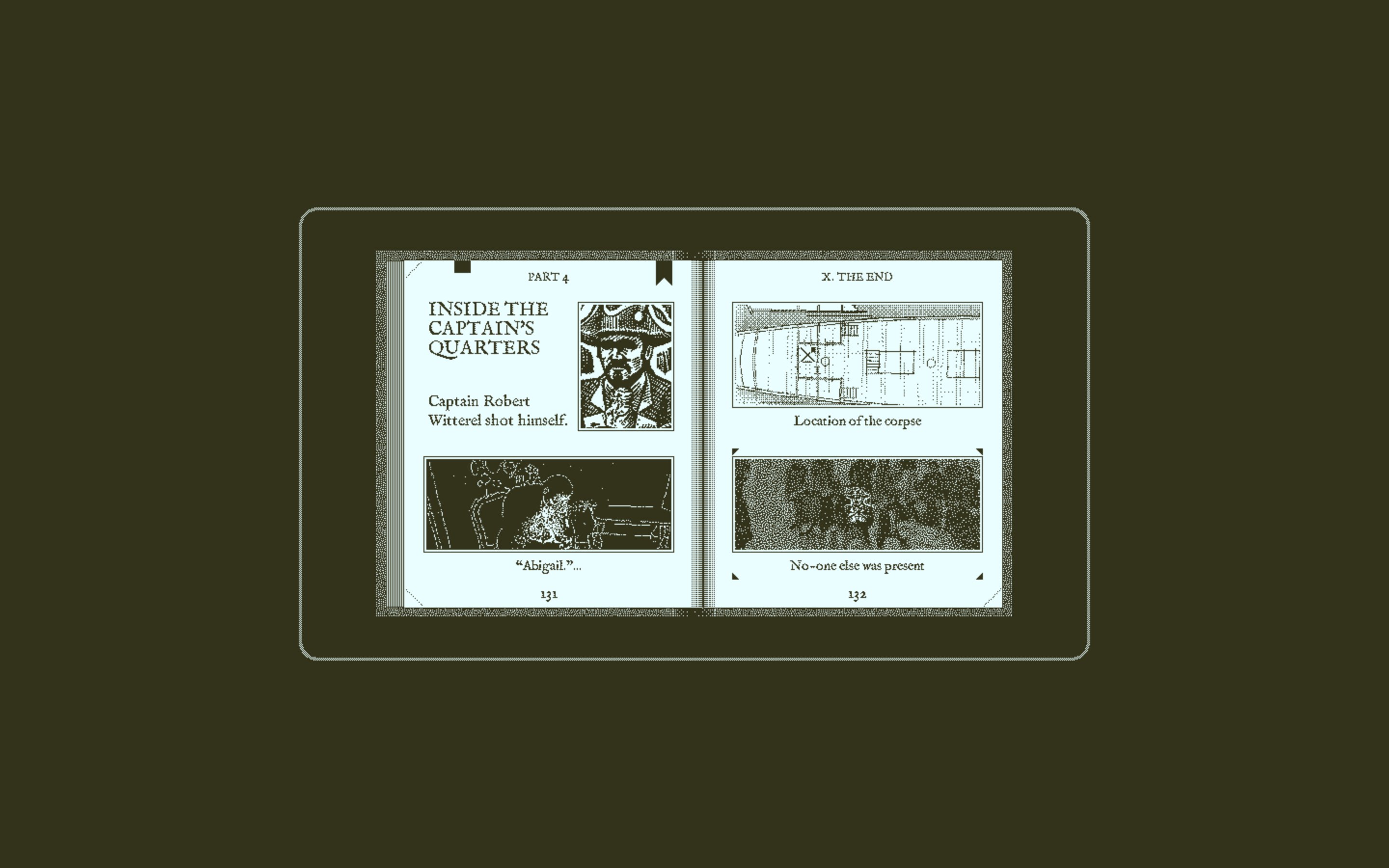This week, I played the mystery game Return of the Obra Dinn, created by Lucas Pope (also known for creating Papers, Please) and published by 3909 LLC. I played the game on my Mac through Steam. The game is also available to be played on PC via Steam, as well as Nintendo Switch, PlayStation 4, and Xbox One. The target audience of this game seems to be individuals who are interested in deep narratives, especially those who have no issue with more mature topics (the premise of the game is unravelling the way every person on the ship perished, with themes such as murder and suicide playing significant roles in the plot). Going along with this, the game doesn’t aim to make itself appealing to children, as its visuals don’t have bright colors or cartoonish characters that would capture younger audiences’ attentions. Conversely, the dithered bitmap aims to emulate the look of retro computers, as the settings menu even lets the player change between color palettes themed around various systems.


The goal of this game is to unravel the fates of all 60 people who were aboard the Obra Dinn. Information is stored in the book that the player carries, from each person’s face and name (once it can be deduced), to the way they died and, if relevant, who killed them. The player can look back in time by interacting with corpses to see the moments leading up to that specific individual’s death, including what was said and the people who were present. This whole sequence is the core gameplay loop: enter the past by interacting with a corpse, examine the circumstances shown in the flashback, record new information in the book. There are various different interactions possible as well (the “arcs” of the gameplay), but some of these interactions are unavailable when examining a flashback, such as opening doors. One thing that I feel could be improved is the way the player can interact with objects, since it initially felt slightly awkward to have to stop moving and zoom in specifically to examine people, but I quickly caught on. Since the controls are so simple, the player can also give their full attention to the narrative.
One satisfying aspect of the gameplay loop is how the loops are all inevitably intertwined, given the nature of how the people aboard the Obra Dinn interacted with each other. Thus, information that might not have been revealed in one flashback is shown in a different person’s fate, forcing the player to pay attention to the relationships between characters who have been revealed thus far. It is particularly rewarding to piece together a person’s full fate: their name, the way they died, and who killed them. Once the player correctly deduces the first three characters’ fates, their entries are typeset into the book. This gave me a clear early goal to work towards and it felt extremely satisfying to have this more permanent mark of progress.

This also ties into the theme of the player as an investigator, since incomplete entries are styled as handwritten notes.

The whole goal of this story is to unravel the emergent narrative, and the way the story is laid out is so delightful to discover, piece by piece. There is also a hint of fantasy, from the time travel mechanics that the player can experience through their compass, to the gigantic sea monster that leads to many people’s deaths. I had a fantastic time playing this game, and I thorougly felt that these types of fun were represented in a cohesive manner. I am looking forward to finishing this game on my own time and unravelling the fates of the entire crew!



